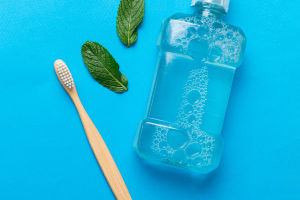Lipstick, a staple in many makeup bags, has been used for centuries to enhance beauty and express individuality.
However, beneath its glossy surface, there are potential dangers associated with its use that often go unnoticed.
Let's explore these risks, shedding light on what consumers should be aware of to make informed choices.
Chemical Composition and Health Risks
One of the primary concerns regarding lipstick is its chemical composition. Many lipsticks contain a variety of synthetic chemicals, some of which can pose health risks. Among these are lead, parabens, phthalates, and synthetic dyes.
Lead, a heavy metal, has been found in trace amounts in some lipsticks. While the FDA considers these levels safe, repeated exposure over time can accumulate in the body, potentially leading to health issues such as neurological damage and hormonal disruption. Pregnant women and young children are particularly vulnerable, as lead can affect brain development and cognitive function.
Parabens, used as preservatives, have been linked to hormone disruption. They can mimic estrogen in the body, potentially increasing the risk of breast cancer. Although research is ongoing, and the levels found in cosmetics are generally considered low, the cumulative effect of using multiple paraben-containing products daily is a cause for concern.
Phthalates, often used to make lipsticks more pliable, are another group of chemicals under scrutiny. They have been associated with reproductive issues, including reduced fertility and developmental problems in children. The European Union has banned several phthalates from cosmetics, but they are still permitted in the United States, leading to discrepancies in safety standards.
Synthetic dyes, used to give lipstick its vibrant color, can also pose risks. Some dyes are derived from coal tar and have been linked to skin irritation and allergies. Moreover, certain dyes have been found to contain carcinogenic impurities, raising concerns about long-term exposure.
Microbial Contamination
Lipstick can also be a breeding ground for bacteria and fungi. Because it is frequently applied and often shared, there is a risk of microbial contamination. This can lead to infections, particularly if the lipstick is used near cuts or sores on the lips. Storing lipstick in warm, humid environments, such as a bathroom, can further increase the risk of microbial growth.
Allergic Reactions and Sensitivities
Many people experience allergic reactions to ingredients in lipstick. Common allergens include fragrance, preservatives, and certain dyes. Symptoms can range from mild irritation and dryness to more severe reactions such as swelling, itching, and blistering. Individuals with sensitive skin or allergies should be particularly cautious and may benefit from using hypoallergenic or natural lipsticks.
Ingestion and Long-Term Exposure
Unlike other cosmetics, lipstick is applied to the lips, making ingestion inevitable. Studies estimate that women who wear lipstick daily can ingest between 4 and 9 pounds of lipstick over their lifetime. This ingestion means that any harmful substances present in the lipstick can directly enter the digestive system and bloodstream.
Long-term exposure to the chemicals in lipstick, even at low levels, is a growing concern. While a single application might not pose a significant risk, the cumulative effect of daily use over years or decades is less well understood. This is particularly concerning for substances like lead and parabens, which can build up in the body over time.
Environmental Impact
Beyond personal health risks, the environmental impact of lipstick production and disposal is also noteworthy. Many lipsticks are packaged in plastic tubes, contributing to plastic waste. The manufacturing process can also involve harmful chemicals and pollutants, which can contaminate water and soil.
Moreover, certain ingredients, such as palm oil, are associated with deforestation and habitat destruction. Consumers can mitigate these impacts by choosing brands that prioritize sustainability, use recyclable packaging, and source ingredients responsibly.
While lipstick remains a beloved beauty product, it is essential to be aware of its potential dangers. Consumers can protect themselves by reading ingredient labels, choosing products free from harmful chemicals, and being mindful of the environmental impact. As the beauty industry evolves, increased transparency and stricter regulations will hopefully lead to safer products for everyone. Until then, informed choices are the best defense against the possible dangers of lipstick.


